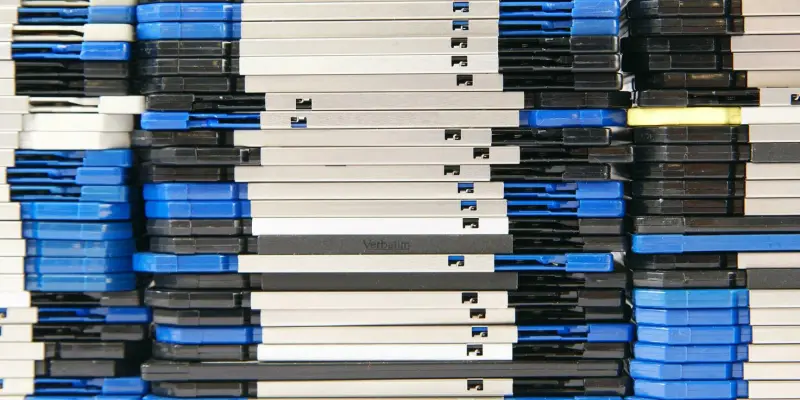The launch of the Nintendo Switch 2 has triggered a significant shift in the gaming sector, particularly in the realm of storage solutions. The announcements of this long-anticipated gadget coincided with a sudden surge in sales of microSD Express cards in Japan, sparking interest in a previously underutilized technology. A marked contrast from traditional SD card formats such as SDHC, SDXC, UHS-I, and UHS-II, SD Express cards offer unparalleled speed and performance, positioning them as critical components for modern gaming consoles.
Emergence of SD Express Cards
Advantages of SD Express Compared to Traditional SD Cards
An integral aspect that differentiates SD Express, introduced in 2018, from conventional SD cards lies in its superior speed capabilities. Unlike SDHC and SDXC cards that offer read speeds between 10 MB/s and 90 MB/s, SD Express cards utilize PCIe technology to elevate read speeds up to 900 MB/s. This essentially places them closer to NVMe SSDs while surpassing the performance offered by SATA drives. The emergence of SD Express cards signifies a much-needed advancement in storage technology, driven by the increasing demands of contemporary gaming systems.
Notably, devices supporting such high bandwidth requirements were scarce, leading to SD Express technology stagnating over the past years. However, the Nintendo Switch 2’s reliance on these high-speed memory cards to minimize game load times renewed interest and spurred development in the sector. As manufacturers like SanDisk and Lexar reevaluate their production strategies, new players such as Samsung and Western Digital are gearing up to introduce their variants in response to the burgeoning demand.
Prior to the Switch 2 announcement, manufacturers had little incentive to invest in SD Express cards due to the sufficiency of standard memory cards for prevalent tasks like mobile app usage and 4K video recording. The stagnation rendered SD Express a niche product, seldom utilized or sought after in the mass market. The gaming industry’s shift towards larger and more demanding titles now necessitates enhanced storage solutions capable of handling extensive game files swiftly and efficiently, revitalizing interest in SD Express cards.
Nintendo Switch 2’s Role in MicroSD Express Card Demand
Nintendo’s decision to employ microSD Express cards in their new Switch 2 underpins this renewed focus on high-speed storage. The need for sophisticated storage stems from the evolving trend of increasingly large game files, particularly from third-party developers, which swiftly consume the console’s onboard memory. The Switch 2’s 256 GB built-in storage easily fills up with popular games like Street Fighter 6 and Elden Ring, making additional storage essential for avid gamers.
It is noteworthy that Nintendo’s own games, such as Mario Kart World and Donkey Kong Bananza, inherently require less storage space. Nonetheless, the presence of larger third-party titles necessitates high-capacity and high-speed storage solutions to ensure seamless gameplay. This transition to high-speed memory cards is pivotal for advancing gaming technology, reducing load times, and accommodating larger game files. As the Switch 2’s market influence continues to grow, the demand for SD Express cards is likely to surge further, propelling manufacturers to keep pace with this new standard.
Market Response and Future Considerations
Manufacturer Adaptation to Rising Demand
In response to the sudden spike in SD Express card sales, manufacturers across the globe are quickly adapting to address the expanding market needs. Hermitage Akihabara reported a rapid sell-out of microSD Express cards in Japan’s e-commerce stores following the Switch 2 announcement, highlighting the urgent demand for these advanced storage solutions. This unprecedented interest is compelling companies to ramp up production and innovate further in the field.
Manufacturers previously overlooked the production of SD Express cards due to limited market interest and practical application. However, the Switch 2’s reliance on these cards has sparked a reconsideration of priorities. Consequently, companies such as SanDisk, Lexar, Samsung, and Western Digital are setting out to create robust, high-speed memory cards that cater to both gaming consoles and other high-performance devices. This trend illustrates a broader technological shift within the industry, urging manufacturers to align their offerings with contemporary gaming requirements.
Implications for the Gaming Industry
The Switch 2’s integration of microSD Express technology sets a precedent for future gaming consoles and electronic devices. As the gaming industry evolves, the demand for rapid, high-capacity storage will inevitably rise, paving the way for a technology-driven transformation. The advantages presented by SD Express cards extend beyond just gaming; other high-demand sectors, including professional photography and video production, are poised to benefit from these advancements.
Experts predict that the widespread adoption of SD Express cards will enhance user experiences across varying digital media platforms. By ensuring minimal load times and smooth data processing, these cards will redefine performance standards within handheld and stationary gaming systems, establishing an enviable competitive advantage for manufacturers willing to embrace this technology. As demand continues to grow, it is plausible that SD Express technology will become a staple in both consumer and professional digital devices.
The Path Ahead for Gaming Storage Solutions
The release of the Nintendo Switch 2 has ignited a significant transformation in the gaming industry, especially concerning storage solutions. The debut of this eagerly awaited console coincided with a sudden spike in the sales of microSD Express cards in Japan, drawing attention to a technology that had not been fully utilized before. Unlike traditional SD card formats like SDHC, SDXC, UHS-I, and UHS-II, SD Express cards deliver unmatched speed and performance. This makes them vital components for modern gaming consoles, which require swift and reliable storage to handle the demands of today’s high-performance games. The high-speed data transfer rates offered by SD Express cards contribute to quicker game load times, enhanced performance, and a more seamless gaming experience. As the Nintendo Switch 2 continues to dominate the market, the relevance and necessity of SD Express cards in the gaming world are expected to grow, signaling a new era in gaming technology where performance is paramount.

